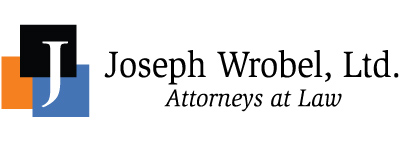
What is a CHAPTER 7 Bankruptcy?
Chapter 7 is the legal way to declare yourself unable to pay your debts. To file a Chapter 7, under the new law, your income and expenses must meet certain guidelines, demonstrating that you unable to pay your debts. When the Chapter 7 is completed, you will receive a Court Order discharging your legal obligation to pay your creditors.
They will NEVER be able to collect the money that you owe them!
What are the benefits of CHAPTER 7?
Debt relief and the elimination of bill problems are the obvious benefits provided by Chapter 7. Another very important benefit is the protection against creditor harassment provided to you by the “Automatic Stay”.
After you sign the Chapter 7 Petition that our office prepares for you, we will file the Petition with the Clerk of the United States Bankruptcy Court. Immediately upon filing, a protection Order is entered by the Court. This protection Order is known as the “Automatic Stay”.
The “Automatic Stay” protects you from ALL collection activities and harassment by ALL your creditors. Your creditors will NO LONGER be allowed to:
-
- Harass you by telephone
- Send you collection letters
- File a lawsuit
- Proceed with an existing lawsuit
- Repossess your house
- Start a wage garnishment or continue with a wage garnishment
- The “Automatic Stay” is a powerful shield that provides you with peace of mind. It allows you to continue with your day-to-day life, no longer having to worry about creditors and their annoying telephone calls and is the first step to a FRESH START with your finances.
Who can file CHAPTER 7?
Under the new law, if your income and expenses meet certain guidelines, demonstrating that you are unable to pay your debts, you can usually file Chapter 7. Generally, you can file Chapter 7 if you pass what is known as the “Median Income Test”.
The first method of passing the “means test” is by demonstrating that your income is below a certain median level. Your “income”, for bankruptcy purposes, is the total gross income received from all regular sources over the six months before your petition is filed, divided by 6, then multiplied by 12. If your “income” is lower than the most recent median income figures (published by the Census Bureau and adjusted for inflation each year), for your family size your county and state, you meet one of the requirements to file Chapter 7.
For example, if you are an Illinois resident, your family size is 3, and your household’s income is $60,000.00, you would be eligible to file Chapter 7 since your income for your family size is below the current median. See the table below:
==================================================
FAMILY SIZE | MEDIAN INCOME
(based on most recent figures available through May 1, 2012)
1 | $46,983
2 | $59,794
3 | $68,865
4 | $81,570*
*You are allowed to add $7,500 for each individual in excess of 4.
===================================================
The second method of passing the “Median Income Test” is by demonstrating that after all of your “allowed living expenses” are deducted from your “income”, you are left with an insufficient amount to make payments to your creditors. This is known as the Means Test portion of the Median Income Test. Your “allowed living expenses” are based on IRS standards. If the amount left over after the deduction of your “allowed living expenses”, multiplied by 60, is less than 25% of what you owe to your “nonpriority, unsecured” creditors or $10,000, you are eligible to file Chapter 7.
You will find that the Means Test portion of the Median Income Test is quite complicated and is not simply a matter of plugging in numbers. There are legal decisions and legal conclusions that need to be made to determine the correct dollar amounts and the eligibility of certain expenses. Our office will do the calculations for you.
What happens after the petition is filed?
After your petition is filed with the Court, we will send you a copy of the Notice of Bankruptcy Filing, provide you with your filing date and bankruptcy case number, and advise you when to appear at the meeting with the trustee assigned to your case. One of our lawyers will appear with you at the meeting, where you will be asked some questions about the information in your Petition.
Approximately two to three months after the meeting, the Clerk of the Court will mail you the Order of Discharge which completes your case and discharges your debts.
 Subscribe to CB on YouTube!
Subscribe to CB on YouTube!